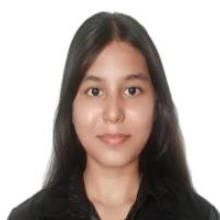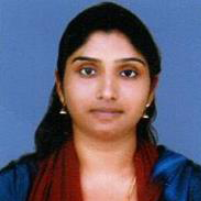International Journal of Image, Graphics and Signal Processing (IJIGSP)
IJIGSP Vol. 17, No. 4, 8 Aug. 2025
Cover page and Table of Contents: PDF (size: 1702KB)
Evaluation of Deep Learning Approaches to Detect Choroidal Neovascularization
PDF (1702KB), PP.105-127
Views: 0 Downloads: 0
Author(s)
Index Terms
Choroidal Neovascularization, CNN, ResNet, Vision Transformer, OCT images, Deep learning
Abstract
In ophthalmology, Choroidal Neovascularization (CNV) is a serious medical disease that, if left untreated, frequently results in significant vision loss. In this investigation, we investigate the evaluation and working of deep learning models, notably basic Convolutional Neural Networks (CNN), ResNet18, ResNet50, VGG16, VGG19, Vision Transformers, EfficientNetV2L, MobileNetV2 and InceptionV3 for identification and classification of CNV in Optical Coherence Tomography (OCT) images. The Kermany dataset, which includes OCT images of both CNV-patients and non-CNV patients (Normal OCT images) are utilized for this paper. The dataset was further used in three different versions based on validation and training split. The images from the dataset are already pre-processed and labelled so no pre-processing operations were performed, how- ever resizing of images have been performed according to the models. The deep learning models are trained and evaluated on standard performance metrics such as precision, recall, accuracy, F1-score, etc. All things considered, our work shows the evaluation of deep learning models to classify OCT images that show the presence of CNV. Based on all three dataset versions, the findings of our study confirm that ResNet18, VGGNet19, and MobileNetV2 beat all other approaches and achieved an average accuracy of 1. Additionally, Vision Transformer and Effi- cientNetV2L demonstrated strong performance, averaging 0.99 and 0.96 accuracy on each of the three dataset versions, respectively. These models have the potential to help ophthalmologists detect CNV early and monitor it, which may lead to prompt treatment and better vision preservation for patients.
Cite This Paper
Sahil Chukka, Vardhanika Jagtap, Naveen Patel, Sudiksha Jadhav, Mimi Cherian, Jinesh Melvin Y. I., "Evaluation of Deep Learning Approaches to Detect Choroidal Neovascularization", International Journal of Image, Graphics and Signal Processing(IJIGSP), Vol.17, No.4, pp. 105-127, 2025. DOI:10.5815/ijigsp.2025.04.07
Reference
[1]Ghanchi, Faruque D, et al. “Optical Coherence Tomography Angiography for Identifying Choroidal Neovascular Membranes: A Masked Study in Clinical Prac- tice.” Eye (London, England), U.S. National Library of Medicine, Jan. 2021, www.ncbi.nlm.nih.gov/.
[2]“Wet AMD - Choroidal Neovascularization. “StackPath, Natural Eye Care, www.naturaleyecare.com/eye-conditions/choroidal-neovascularization/. Accessed 28 Sept. 2023.
[3]L. Milanovic, S. Milenkovic, N. Petrovic, N. Grujovic, V. Slavkovic and F. Zivic, “Optical Coherence Tomography (OCT) Imaging Technology,” 2021 IEEE 21st International Conference on Bioinformatics and Bioengineering (BIBE), Kragujevac, Serbia, 2021, pp. 1-5, doi: 10.1109/BIBE52308.2021.9635099.
[4]T. S. Mathai, K. L. Lathrop and J. Galeotti, “Learning To Segment Corneal Tissue Interfaces In Oct Images,” 2019 IEEE 16th International Symposium on Biomedical Imaging (ISBI 2019), Venice, Italy, 2019, pp. 1432-1436, doi: 10.1109/ISBI.2019.8759252.
[5]G. Quellec, M. Lamard, P. M. Josselin, G. Cazuguel, B. Cochener and C. Roux, “Optimal Wavelet Transform for the Detection of Microaneurysms in Retina Photographs,” in IEEE Transactions on Medical Imaging, vol. 27, no. 9, pp. 1230-1241, Sept. 2008, doi: 10.1109/TMI.2008.920619.
[6]P. Tanachotnarangkun et al., “A Framework for Generating an ICGA from a Fundus Image using GAN,” 2022 19th International Conference on Electri- cal Engineering/Electronics, Computer, Telecommunications and Information Technology (ECTI-CON), Prachuap Khiri Khan, Thailand, 2022, pp. 1-4, doi: 10.1109/ECTI-CON54298.2022.9795543.
[7]Z. Shen, H. Fu, J. Shen and L. Shao, “Modeling and Enhancing Low-Quality Retinal Fundus Images,” in IEEE Transactions on Medical Imaging, vol. 40, no. 3, pp. 996-1006, March 2021, doi: 10.1109/TMI.2020.3043495.
[8]“Vision Impairment and Blindness.” World Health Organization, World Health Organization, www.who.int/news-room/fact-sheets/detail/blindness-and-visual- impairment. Accessed 28 Sept. 2023.
[9]V. Rajinikanth, S. Kadry, R. Damaˇseviˇcius, D. Taniar and H. T. Rauf, “Machine-Learning-Scheme to Detect Choroidal-Neovascularization in Retinal OCT Image,” 2021 Seventh International conference on Bio Signals, Images, and Instrumentation (ICBSII), Chennai, India, 2021, pp. 1-5, doi: 10.1109/ICB- SII51839.2021.9445134.
[10]Han, J.; Choi, S.; Park, J.I.; Hwang, J.S.; Han, J.M.; Ko, J.; Yoon, J.; Hwang, D.D.-J. Detecting Macular Disease Based on Optical Coherence Tomog- raphy Using a Deep Convolutional Network. J. Clin. Med. 2023, 12, 1005. https://doi.org/10.3390/jcm12031005.
[11]M. Rahimzadeh and M. R. Mohammadi, “ROCT-Net: A new ensemble deep convolutional model with improved spatial resolution learning for detecting common diseases from retinal OCT images,” 2021 11th International Conference on Com- puter Engineering and Knowledge (ICCKE), Mashhad, Iran, Islamic Republic of, 2021, pp. 85-91, doi: 10.1109/ICCKE54056.2021.9721471.
[12]Z. Baharlouei, H. Rabbani and G. Plonka, “Detection of Retinal Abnormal- ities in OCT Images Using Wavelet Scattering Network,” 2022 44th Annual International Conference of the IEEE Engineering in Medicine & Biology Soci- ety (EMBC), Glasgow, Scotland, United Kingdom, 2022, pp. 3862-3865, doi: 10.1109/EMBC48229.2022.9871989
[13]M. Anna Latha, N. Christy Evangeline and S. SankaraNarayanan, “Colour Image Segmentation of Fundus Blood Vessels for the Detection of Hypertensive Retinopathy,” 2018 Fourth International Conference on Biosignals, Images and Instrumentation (ICBSII), Chennai, India, 2018, pp. 206-212, doi: 10.1109/ICB- SII.2018.8524781.
[14]B. N, H. P. A and S. O, “Feature Extraction and Quantification in Retinal Fundus Autofluorescence Images of CSR Patients,” 2022 International Conference on Innovations in Science and Technology for Sustainable Development (ICISTSD), Kollam, India, 2022, pp. 74-79, doi: 10.1109/ICISTSD55159.2022.10010533.
[15]Pawan, S.J., Sankar, R., Jain, A. et al. Capsule Network–based architectures for the segmentation of sub-retinal serous fluid in optical coherence tomography images of central serous chorioretinopathy. Med Biol Eng Comput 59, 1245–1259 (2021). https://doi.org/10.1007/s11517-021-02364-4
[16]Abirami, M.S., Vennila, B., Suganthi, K. et al. Detection of Choroidal Neovas- cularization (CNV) in Retina OCT Images Using VGG16 and DenseNet CNN. Wireless Pers Commun 127, 2569–2583 (2022). https://doi.org/10.1007/s11277- 021-09086-8.
[17]Jie Wang, Tristan T. Hormel, Kotaro Tsuboi, Xiaogang Wang, Xiaoyan Ding, Xiaoyan Peng, David Huang, Steven T. Bailey, Yali Jia; Deep Learning for Diagnosing and Segmenting Choroidal Neovascularization in OCT Angiogra- phy in a Large Real-World Data Set. Trans. Vis. Sci. Tech. 2023; 12(4):15. https://doi.org/10.1167/tvst.12.4.15.
[18]Feng, W., Duan, M., Wang, B. et al. Automated segmentation of choroidal neovascularization on optical coherence tomography angiography images of neovascular age-related macular degeneration patients based on deep learning. J Big Data 10, 111 (2023). https://doi.org/10.1186/s40537-023-00757-w
[19]Sogawa T, Tabuchi H, Nagasato D, Masumoto H, Ikuno Y, Ohsugi H, Ishitobi N, Mitamura Y. Accuracy of a deep convolutional neural network in the detection of myopic macular diseases using swept-source optical coherence tomography. PLoS One. 2020 Apr 16;15(4):e0227240. doi: 10.1371/journal.pone.0227240. PMID: 32298265; PMCID: PMC7161961.
[20]Vali, M.; Nazari, B.; Sadri, S.; Pour, E.K.; Riazi-Esfahani, H.; Faghihi, H.; Ebrahimiadib, N.; Azizkhani, M.; Innes, W.; Steel, D.H.; et al. CNV-Net: Segmentation, Classification and Activity Score Measurement of Choroidal Neovascularization (CNV) Using Optical Coherence Tomography Angiography (OCTA). Diagnostics 2023, 13, 1309. https://doi.org/10.3390/diagnostics13071309.
[21]Riazi Esfahani P, Reddy A J, Nawathey N, et al. (July 09, 2023) Deep Learning Classification of Drusen, Choroidal Neovascularization, and Diabetic Macular Edema in Optical Coherence Tomography (OCT) Images. Cureus 15(7): e41615. doi:10.7759/cureus.41615.
[22]“DEEP LEARNING MODEL FOR OPTICAL DIAGNOSIS OF AN RETINA”, International Journal of Emerging Technologies and Innovative Research (www.jetir.org), ISSN:2349-5162, Vol.10, Issue 2, page no.c521-c527, February- 2023, Available :http://www.jetir.org/papers/JETIR2302271.pdf.
[23]Kermany, Daniel; Zhang, Kang; Goldbaum, Michael (2018), “Large Dataset of Labeled Optical Coherence Tomography (OCT) and Chest X-Ray Images”, Mendeley Data, V3, doi: 10.17632/rscbjbr9sj.3
[24]O’Shea, Keiron, and Ryan Nash. “An introduction to convolutional neural networks.” arXiv preprint arXiv:1511.08458 (2015).
[25]K. He, X. Zhang, S. Ren and J. Sun, “Deep Residual Learning for Image Recog- nition,” 2016 IEEE Conference on Computer Vision and Pattern Recognition (CVPR), Las Vegas, NV, USA, 2016, pp. 770-778, doi: 10.1109/CVPR.2016.90.
[26]Simonyan, Karen, and Andrew Zisserman. “Very deep convolutional networks for large-scale image recognition.” arXiv preprint arXiv:1409.1556 (2014).
[27]Dosovitskiy, Alexey, et al. “An image is worth 16x16 words: Transformers for image recognition at scale.” arXiv preprint arXiv:2010.11929 (2020).
[28]Vaswani, A., Shazeer, N., Parmar, N., Uszkoreit, J., Jones, L., Gomez, A. N., et al. (2017). Attention is all you need. In Advances in Neural Information Processing Systems (pp. 5998–6008).
[29]Tan, Mingxing, and Quoc Le. “Efficientnetv2: Smaller models and faster train- ing.” International conference on machine learning. PMLR, 2021.
[30]Sandler, M., Howard, A., Zhu, M., Zhmoginov, A., Chen, L. C. (2018). Mobilenetv2: Inverted residuals and linear bottlenecks. In Proceedings of the IEEE conference on computer vision and pattern recognition (pp. 4510-4520).
[31]C. Szegedy, V. Vanhoucke, S. Ioffe, J. Shlens and Z. Wojna, “Rethinking the Inception Architecture for Computer Vision,” 2016 IEEE Conference on Com- puter Vision and Pattern Recognition (CVPR), Las Vegas, NV, USA, 2016, pp. 2818-2826, doi: 10.1109/CVPR.2016.308.
[32]J. Deng, W. Dong, R. Socher, L. -J. Li, Kai Li and Li Fei-Fei, “ImageNet: A large-scale hierarchical image database,” 2009 IEEE Conference on Com- puter Vision and Pattern Recognition, Miami, FL, USA, 2009, pp. 248-255, doi: 10.1109/CVPR.2009.5206848.
[33]Choudhary A, Ahlawat S, Urooj S, Pathak N, Lay-Ekuakille A, Sharma N. A Deep Learning-Based Framework for Retinal Disease Classification. Health- care (Basel). 2023 Jan 10;11(2):212. doi: 10.3390/healthcare11020212. PMID: 36673578; PMCID: PMC9859538.





